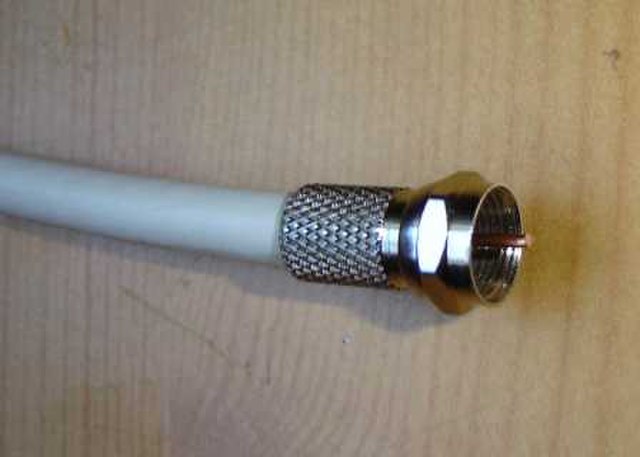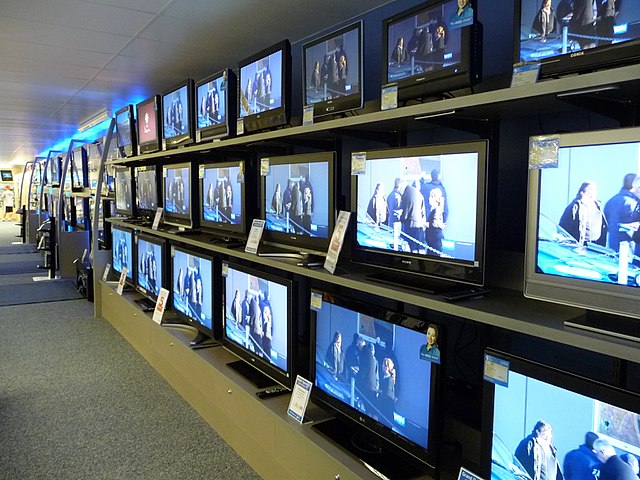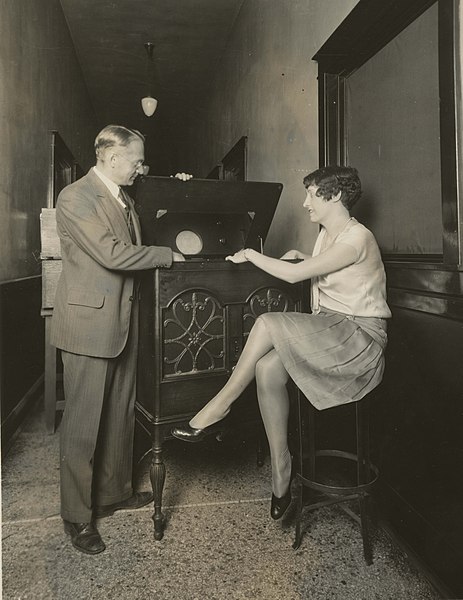Cable television is a system of delivering television programming to consumers via radio frequency (RF) signals transmitted through coaxial cables, or in more recent systems, light pulses through fibre-optic cables. This contrasts with broadcast television, in which the television signal is transmitted over-the-air by radio waves and received by a television antenna attached to the television; or satellite television, in which the television signal is transmitted over-the-air by radio waves from a communications satellite orbiting the Earth, and received by a satellite dish antenna on the roof. FM radio programming, high-speed Internet, telephone services, and similar non-television services may also be provided through these cables. Analog television was standard in the 20th century, but since the 2000s, cable systems have been upgraded to digital cable operation.
A coaxial cable used to carry cable television onto subscribers' premises
A set-top box, an electronic device which cable subscribers use to connect the cable signal to their television sets. Presented unit is a Cisco RNG200N for QAM digital cable television system used in North America.
A cable television distribution box (left) in the basement of a building in Germany (Kabel BW network, now Vodafone), with a splitter (right) which supplies the signal to separate cables which go to different rooms
Demonstration of a 30-channel cable TV system in the Netherlands in March 1981.
Television (TV) is a telecommunication medium for transmitting moving images and sound. Additionally, the term can refer to a physical television set, rather than the medium of transmission. Television is a mass medium for advertising, entertainment, news, and sports. The medium is capable of more than "radio broadcasting", which refers to an audio signal sent to radio receivers.
Flat-screen television receivers on display for sale at a consumer electronics store in 2008
Ferdinand Braun
Vladimir Zworykin demonstrates electronic television (1929).
Manfred von Ardenne in 1933








